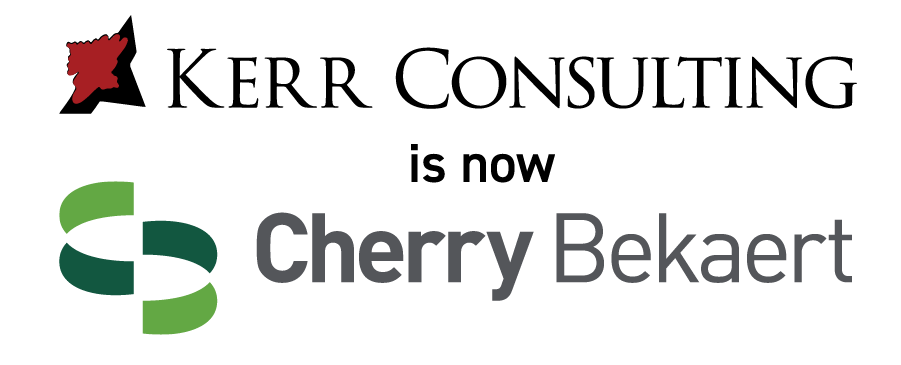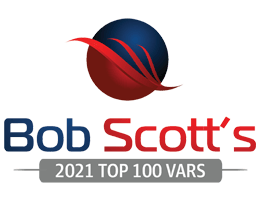Quickbooks Desktop is discontinued. What's Next?
Five Reasons People Are Leaving Quickbooks for Sage Intacct
The TechValidate study corresponds with the main bottlenecks that QuickBooks users identify as their organizations push the limits of the functionality built into QuickBooks Let’s look at them a little more closely
1. "I need spreadsheets outside of Quickbooks to track the data I need."
“After spending over one week sifting through massive spreadsheets, we discovered that we had a calculation error in how we had been recognizing revenue for the past three years”
Sound familiar? Hopefully not—but many organizations naturally and gradually develop sophisticated accounting requirements (such as revenue recognition and multi-entity consolidation) And if QuickBooks is the financial foundation, that often means cumbersome workarounds because QuickBooks doesn’t provide the built-in capabilities for these complex processes.
Are you exporting data to multiple spreadsheets? Setting up dummy accounts? Creating additional journal entries each month? Or have you created home-grown applications for recording revenue or expenses outside of QuickBooks? These workarounds lead to entry errors, incorrect or outdated data, process inefficiencies, wasted time and resources, and a lack control and compliance
2. "There's too much manual and duplicated data entry. I'm tracking things in multiple places."
“How do I import customer order data into QuickBooks? I currently spend many hours manually creating invoices in QuickBooks, and there should be a better way”
Most companies don’t integrate QuickBooks with other key business applications, opting instead to just manually integrate the systems (think: flat files, CSV dumps, and rekeying) That might suffice when volumes are small But ask anyone who’s endured these workarounds and you’ll see it’s a real productivity killer as the business grows Who has time to manually research, re-enter, and verify data that’s already captured elsewhere? Instead of automating your business, these manual integrations are invitations to errors and wasted time
3. "The reports in Quickbooks don't provide what I need."
“Rather than constantly struggling to keep up with incoming requests for data and specific reports, Sage Intacct lets us consistently report financials in a timely manner and feel confident that we can easily respond to any new request ”
Real-time visibility into business metrics is essential for timely decisions that boost performance QuickBooks offers canned reports—and no dashboards—so your visibility is limited and you’re often forced to make decisions based on outdated data By leveraging a financial system that incorporates both a multidimensional general ledger and report writer, you can transform your analyses and become a strategic partner who generates insights that answer the bigger questions facing management
4. "Quickbooks was fine when I started, but now my company is growing, and I need more."
“QuickBooks continues to crash, and I lose all our payroll data I don’t have time to re-enter data for 350 hourly employees ”
Maybe you’ve seen a couple of the classic signs that you’ve outgrown QuickBooks Those menus and screens—that used to be so quick and responsive—now have lengthy delays as the system struggles to keep up with data volume and calculation intensity Report-printing takes forever And queries seem to dim the lights
This critical limitation is risky at best It can force you to periodically shut down QuickBooks—just to maintain data files In a worst-case scenario, you’re looking at potentially disastrous results: system crashes and the loss of crucial data That’s no way to run a business
5. "I need real, GAAP compliant accounting software, with the proper controls in place."
“Errors caused by manual processes and a lack of control resulted in $180,000 of improper expense reimbursements within a six month period”
Manual processes are a fact of life with QuickBooks Unfortunately, they increase the probability of data duplication and data entry errors, making it difficult to gain an integrated, real-time financial view of a company’s end-to-end operations
Despite its popularity as a business application for small business, QuickBooks simply wasn’t designed for growing organizations that need advanced functionality to manage sophisticated processes
To accurately forecast your business opportunities and plan proactively, you need an overarching view of operations and the ability to identify process gaps and areas of strength You can’t do that with a financial solution that limits collaboration, doesn’t provide adequate data controls, and can’t integrate with your other data sources, systems, and applications
Questions About Migrating From Quickbooks?
Measuring the Cost of Quickbooks
Despite the inefficiencies and hidden costs of QuickBooks, it’s all too easy to simply postpone the cash outlay to step up to a more robust, automated, and scalable solution. Fortunately, today’s cloud computing-based systems offer exceptional economics that make them a very cost effective alternative. Many organizations find that the time they save from automating critical processes and eliminating spreadsheets can quickly fund the entire cost of moving to a new system. A payback period of just a few months isn’t uncommon.
You can prove this for your own organization by comparing the full costs and productivity implication of continuing to use QuickBooks with the same factors for a new cloud-based financial management system. Thousands of organizations like yours have already made this comparison, and invariably the answer is that graduating to cloud-based financials results in a tremendous, positive ROI.
"Anchor Loans saves over 60 hours a month through productivity gains by using Sage Intacct over QuickBooks. Sage Intacct has empowered my team to provide information to management to make better, more informed decisions that help us compete more effectively.”
~Bryan Thompson, CFO at Anchor Loans
Why is Sage Intacct Better Than Quickbooks?
A new generation of cloud-based financial software has entirely changed the dynamics of graduating from QuickBooks. With cloud-based software, your vendor assumes all of the information technology cost and risk. All you need is a web browser and an internet connection—no technology, servers, software, or IT staff. Cloud computing takes the cost and risk out of graduating from QuickBooks and provides numerous advantages that are essential as your business grows.
Anytime, Anywhere Business Visibility
- Real-Time Data and Processes—Your users (inside or outside the organization) get secure “anytime, anywhere” access to your data and processes.
- Flexible Reporting—With a built-in multidimensional architecture, cloud-based finance delivers accurate and timely reports with relevant insights into data.
- Role-Based Dashboards—You can get real-time global and local visibility into the state of your business—and serve that up to the right stakeholders at the right time.
- Solutions for your industry - Sage Intacct's core financials sit at the heart of a modular system that supports industries of all types
Increased Productivity
- Accounting Automation—Comprehensive automation simplifies core accounting processes such as accounts receivables and payables.
- Extensive Integration—You can tie into leading applications to easily and cost-effectively assemble an interoperable system of best-in-class applications.
- User-Defined Workflows—Automate, control, and streamline processes to optimize processes throughout the organization.
- Best of Breed Financials - Sage Intacct is built from the ground up to provide best in class financials, and is designed to integrate with other software tools you may already use in your organization
Scalability
- Scalable Architecture Grows—As your organization grows, you can increase the transaction volume and easily add new entities.
- Multi-Ledger System—The cloud delivers scalability and control for high-volume, high-transaction businesses.
- Internal Controls—Robust financial controls ensure compliance and auditability
- GAAP Compliance - Sage Intacct is the recommended solution of the AICPA and is GAAP compliant, giving auditors the tools they need





